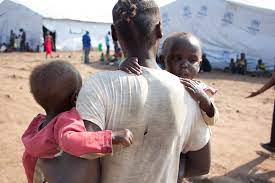“This contribution is undoubtedly a relief for the most vulnerable households in the refugee settlements,” said Abdirahman Meygag, WFP’s Country Director in Uganda.
“We are grateful to the United States Government for supporting our efforts to provide food assistance to displaced families who have lost everything” he said in a statement to APA on Friday.
Since the beginning of 2024, close to 40,000 newly arrived refugees have been registered in Uganda.
Most of them are women, children, and older persons from the Democratic Republic of the Congo (DRC), Somalia, South Sudan, and Sudan, all countries that continue to be ravaged by conflicts.
In 2023, 130,000 new refugees were registered.
Since 2014, the number of refugees in Uganda has quadrupled from 390,000 to 1.6 million, the highest number in any African country.
WN/as/APA
Many of the newly arriving refugees are fleeing conflict in South Sudan, DRC, Somalia, and Sudan, reaching the border on foot or by bus. Despite a progressive asylum refugee support policy, refugees in Uganda have limited livelihood opportunities to sustain themselves and continue to depend on humanitarian assistance, yet the gap between the needs and funding availability has grown steadily.
“As the largest humanitarian partner in Uganda, we are committed to supporting refugees in Uganda through emergency food assistance,” said Daniele Nyirandutiye, USAID Mission Director in Uganda. “As part of our response, we are pleased to partner with the World Food Programme to assist the Government of Uganda’s refugee response efforts and will continue to support both urgent relief and longer-term resilience-building efforts.”
In the face of limited resources and following extensive consultations with refugees and key stakeholders, WFP is now prioritising the most vulnerable refugees for food assistance. WFP supports 1.3 million out of 1.6 million refugees in Uganda with monthly food and cash assistance. Refugee households categorised as extremely vulnerable receive 60 percent of a standard food ration. Less vulnerable families receive 30 percent, while those who are categorised as not vulnerable have been weaned off food assistance and connected to long-term livelihood opportunities. All new arrivals receive a 100 percent food ration for the first three months.
The U.S. is the largest donor to WFP. In Uganda, USAID’s Bureau of Humanitarian Assistance has already contributed over US$300 million to WFP from 2020 to 2023 to support refugees with food and cash transfers and building smallholder farmers’ resilience through agriculture market support.
The World Food Programme urgently needs an additional US$110 million to support and sustain its emergency operations in Uganda up to the end of the year.


